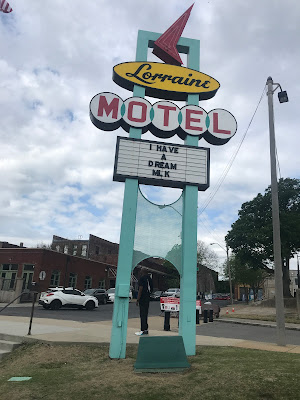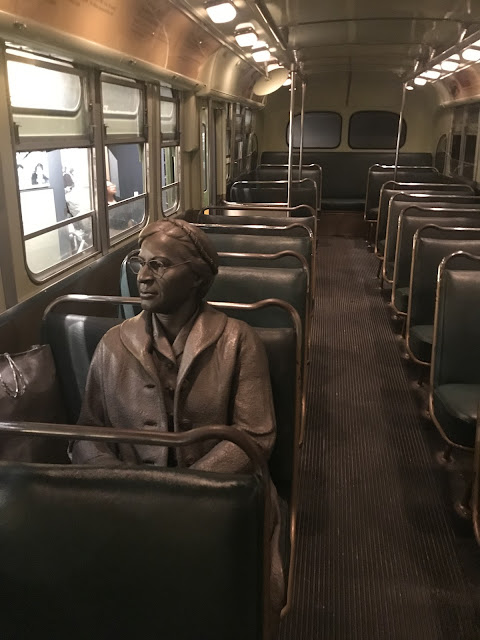 We first visited the National Civil Rights Museum, our first year on the road. A stop at the Loraine Motel is always an emotional experience.
We first visited the National Civil Rights Museum, our first year on the road. A stop at the Loraine Motel is always an emotional experience.
The museum is crafted around the motel where Martin Luther King Jr. would often stay while in Memphis. Ralph Abernathy called room 306, the King-Abernathy Suite. He was standing on the balcony in front of that room when he was shot and killed on April 4, 1968. He had returned to support the Memphis sanitation workers who were striking for better wages and working conditions. The museum is exceptionally well done and highlights the fight for civil rights from slavery through today.
We have visited many sites along the Civil Rights Trail over the past several months. Each stop reminds me that the fight for social justice is not yet over. I recall Mark Twain’s idea that “Travel is fatal to prejudice, bigotry, and narrow-mindedness”.
There is a courtyard to the entrance of the museum that extends across the front of the Motel.

 |
| The wreath marks where Dr. King was standing when he was shot |

You can find street murals on the streets around the museum.


Once inside the museum you move through the history of Blacks in America and their fight for their rights told through art, displays, film and narratives.
 |
In the lobby you are met by the massive bronze sculpture, Movement to Overcome. It is some 12 feet high, and 26 feet long. It honors all of those people involved in the Civil Rights Movement.
|
Throughout the museum there are displays with information and quotes from those within the movement. Some reflect obstacles. Many reflect the resolve.



Walking these halls you see displays depicting key points along the journey and the non-violent resistance.

 |
| Rosa Parks and the Montgomery Bus Boycott |


 |
| The Freedom Rides, and firebombed bus from Anniston Alabama |

 |
| The lunch counter sit-ins in an effort to desegregate public spaces |
 |
| The fight for the right to vote |
 |
| The Memphis Sanitation Workers Strike |
 |
| The Poor Peoples Campaign |
We first visited this museum in 2017, our first year on the road. We didn’t take the time to visit the Legacy Building. Much like how the museum incorporated the motel where Dr. King was killed, they have turned the boarding house from where the shot was fired into an extension of the museum. Here you can view a time-line of the Civil Rights Movement from 1619 to April 1968. Additional exhibits recount Dr. King’s final days, the search for the killer, explores lingering questions, and honors Freedom Fighters on the Freedom Award Wall. Like most of these museums along the Civil Rights Trail, or visit lasted upwards to six hours.
 |
| The perspective from a boarding house window |
 We first visited the National Civil Rights Museum, our first year on the road. A stop at the Loraine Motel is always an emotional experience.
We first visited the National Civil Rights Museum, our first year on the road. A stop at the Loraine Motel is always an emotional experience.


























Comments
Post a Comment